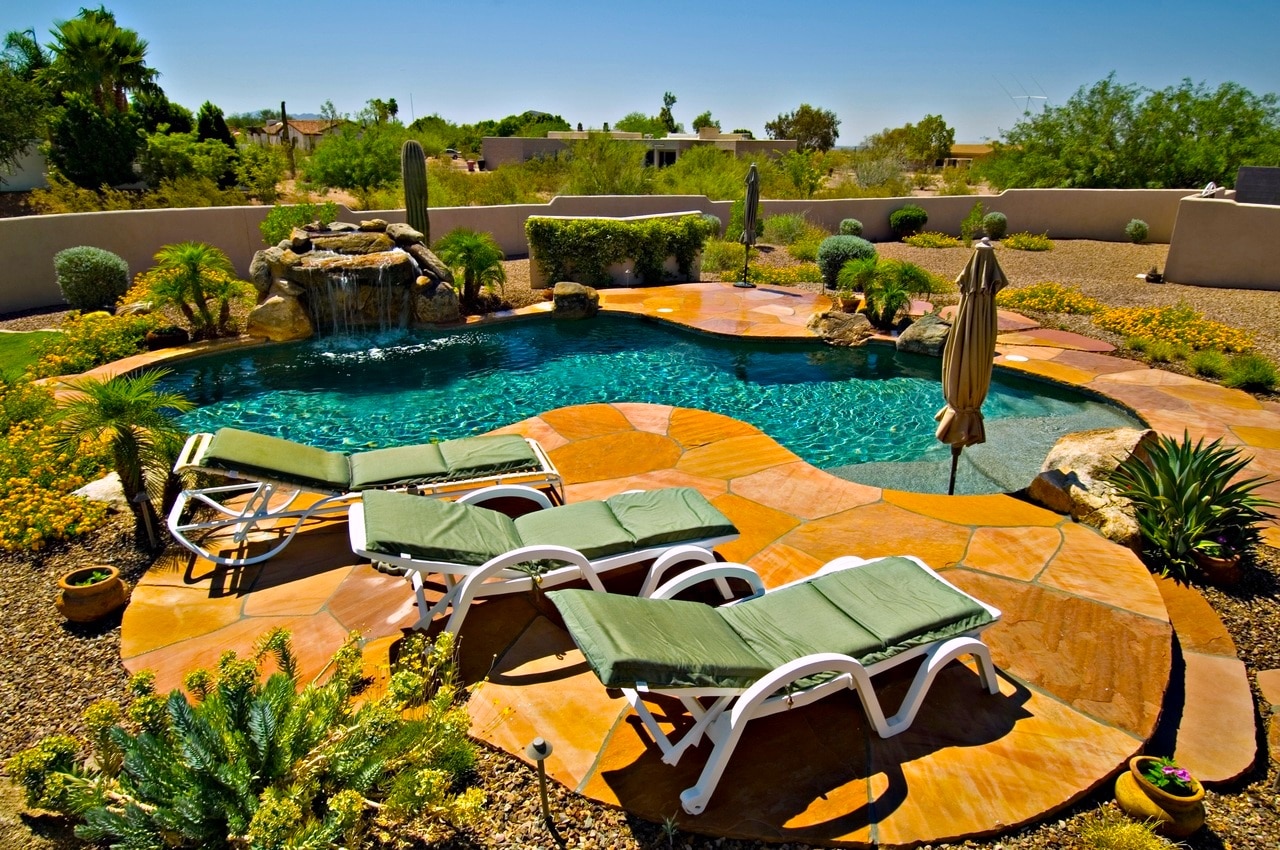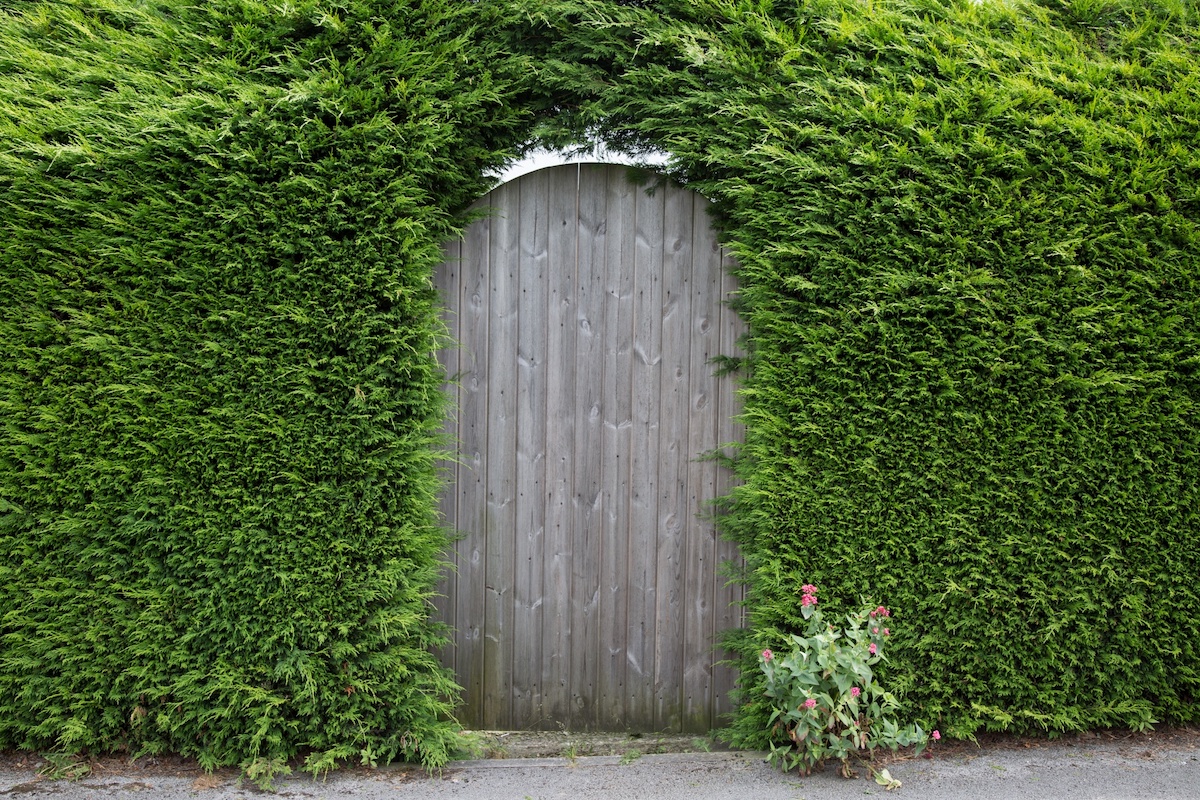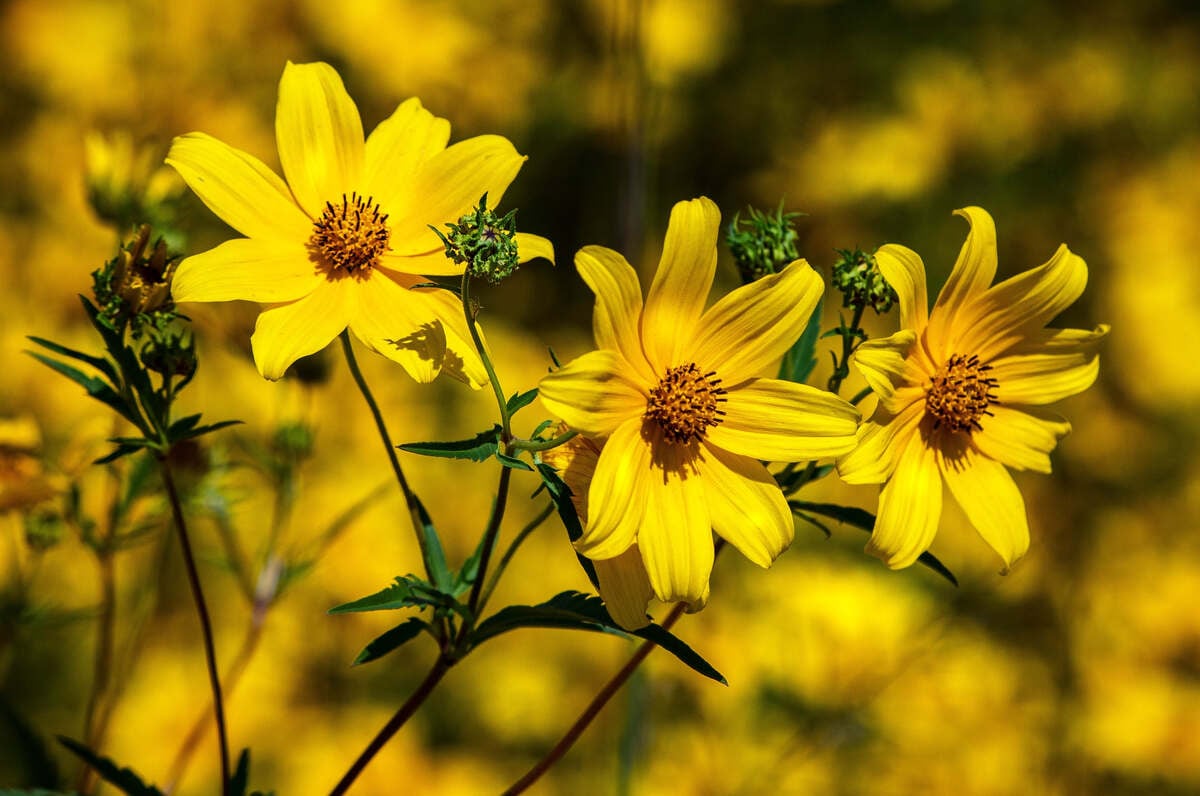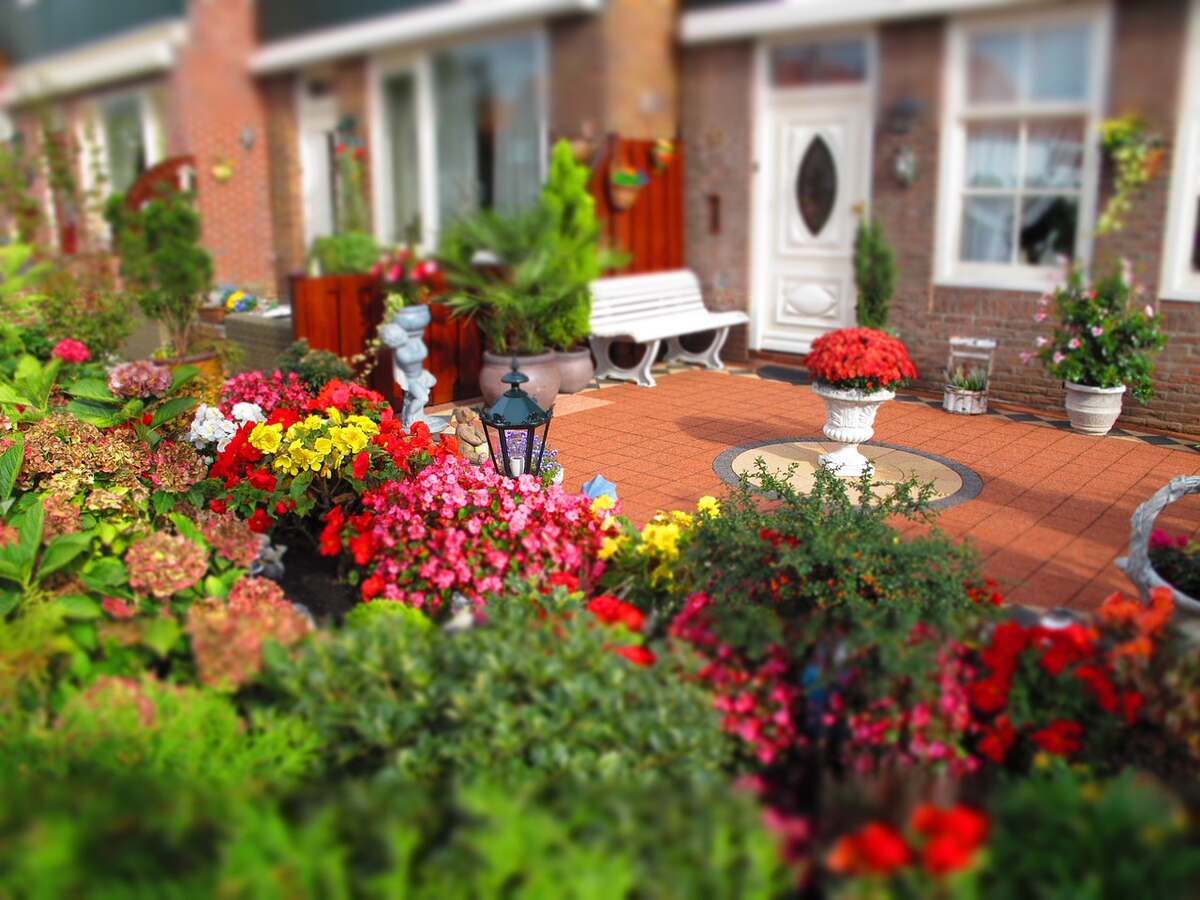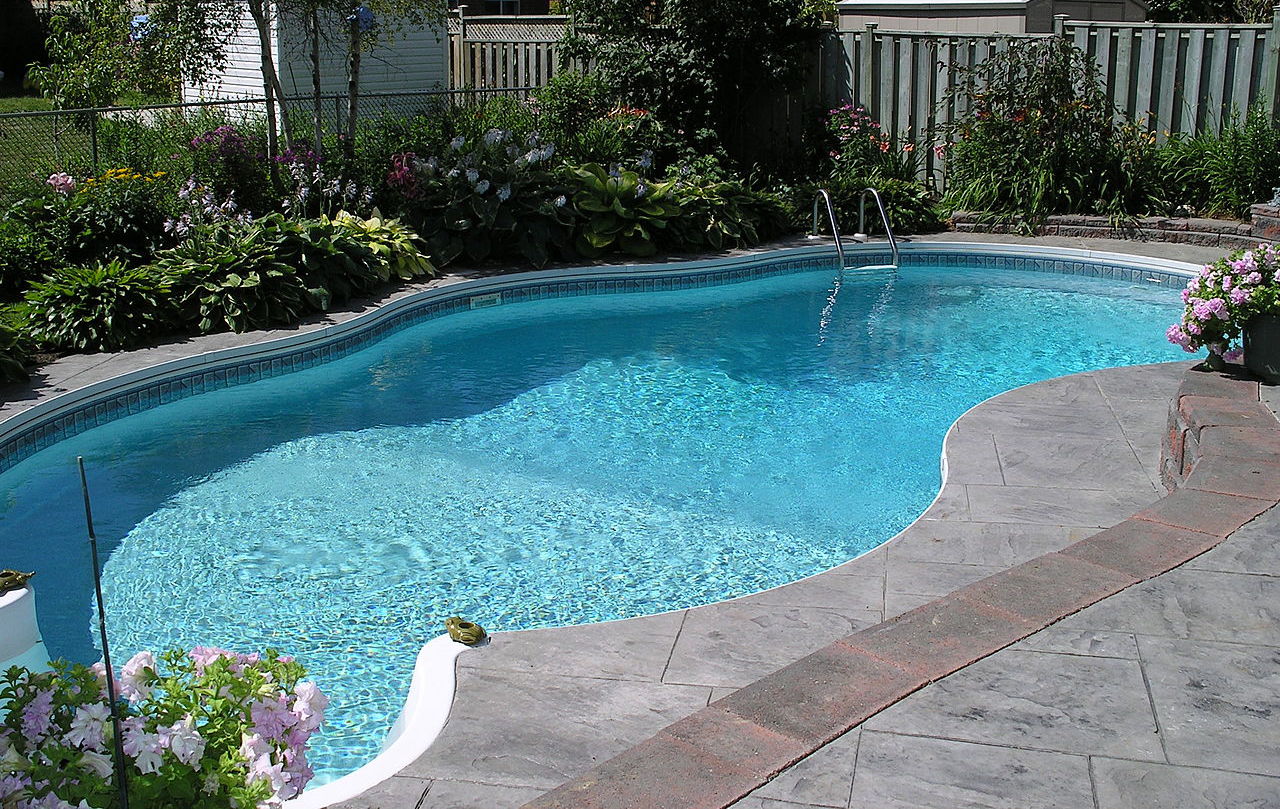
When you’re creating your pool landscape, you want a welcoming watery oasis. Start by choosing plants and features that add color, texture, and some privacy to your yard. Strive for a low-maintenance, no-mess landscape. This way, you can spend more time swimming and less time taking care of what surrounds your pool. Keep these factors in mind when you’re deciding what to plant:
Plant Needs
Swimming pools and the areas near them are usually in full sun. These areas also get hotter than the rest of your yard because of the pool decking. Choose plants that can take the heat and some splashing from chemically treated water. If you have a saltwater pool, pick salt-tolerant plants.
Plant Size
Keep in mind the size of the plant when it’s fully grown. This is especially important with trees. Any landscaper will warn you: avoid trees with spreading and invasive roots. These can crack the pool shell leaving you with costly damage. River birches and willow trees are good examples of poor poolside trees.
Leaves and Debris
Avoid planting trees with branches that will hang over your pool. This will save you from constantly cleaning leaves and other debris that fall in the water and clog the filters. It’s a good idea to steer clear of “messy” trees anywhere near your pool. Trees that drop a lot of leaves, fruit, seeds, bark, needles, etc. are a tree-mendous pain! Stay away from trees that flower in the summer unless you want to spend the season picking petals out of the pool. Crape myrtles are beautiful, but they flower all summer long. Trees that flower in spring are better choices closer to your pool. Avoid planting the cottonwood tree anywhere near your home. Although it won’t send those tufts of cotton flying in summer, it will take you months to clean up after them when they flower in the spring!
Pool areas get a lot of traffic, so you want to keep them as hazard-free as possible. Skip plants with spines or thorns to protect the people playing by and in your pool. Avoid putting pollinator-attracting plants near the pool. This will keep bees and wasps away from those enjoying your pool. There are plenty of beautiful flowers that won’t attract bees. Finally, protect people and animals from your pool by putting a fence around it. Fences are required by law in Washington, D.C., Maryland, and Virginia.
Native Plants
As with any good landscape design, choose plants native to your area. Native plants need less water, fertilizer, and maintenance because they’re accustomed to the climate and soil conditions. Spend more time swimming and less time working by going native.
Low-Maintenance Landscape
This goes hand-in-hand with native plants. Along with choosing plants that thrive in the Washington D.C. area, choose plants that are heat, drought, and neglect-tolerant. If you do have trees, shrubs, or flowers that need some care, make sure they’re easy to reach. Consider perennials that don’t need replanting every year. They also won’t die after flowering, so you won’t have to spend time cleaning up dead foliage.
Best poolside plants in the D.C. Area
Because of the colder winter temperature around Washington, D.C., we don’t use our pools year-round. Our climate dictates what you should plant around your pool. A handy tool to help with this is the USDA’s plant hardiness zone map. Zones go from 1 (arctic cold) to 13 (subtropical). Washington, D.C., is in zone 7a. Before choosing a plant, make sure it will thrive in this zone. For visual interest, use a variety of plants in a staggered pattern.
Shrubs
Shrubs are excellent at providing privacy around your pool. Boxwoods and Japanese hollies are evergreen and will green up your winter landscape. If you’re looking for more color, hydrangeas, and viburnum are just the ticket.
Trees
Trees also provide privacy and beauty around your pool. Consider evergreens like arborvitae, cypress, and magnolia trees. Again, it’s a good idea to plant trees at least six feet away from your pool.
Ornamental grasses
Add an ornamental look with height and movement by planting ornamental grass. The University of Maryland Extension office says, “Maryland native switchgrass (Panicum virgatum), little bluestem (Schizachyrium scoparium), and yellow indiangrass (Sorghastrum nutans) are three great choices for sunny sites.”
You can add more variety and even a tropical vibe with potted plants. Tropical varieties can grow in containers outside in the summer, then come inside when the weather cools. Try birds of paradise or hibiscus. The same is true with succulents to add a Southwestern feel. Aloe or agave attenuata are solid, spike-free choices. Two more potted picks: insect-repelling basil and scented geraniums will keep bugs at bay.
Picking the right plants for your poolside oasis is an important process. Do it right, and you’ll have a beautiful landscape to enjoy without a lot of fuss.
